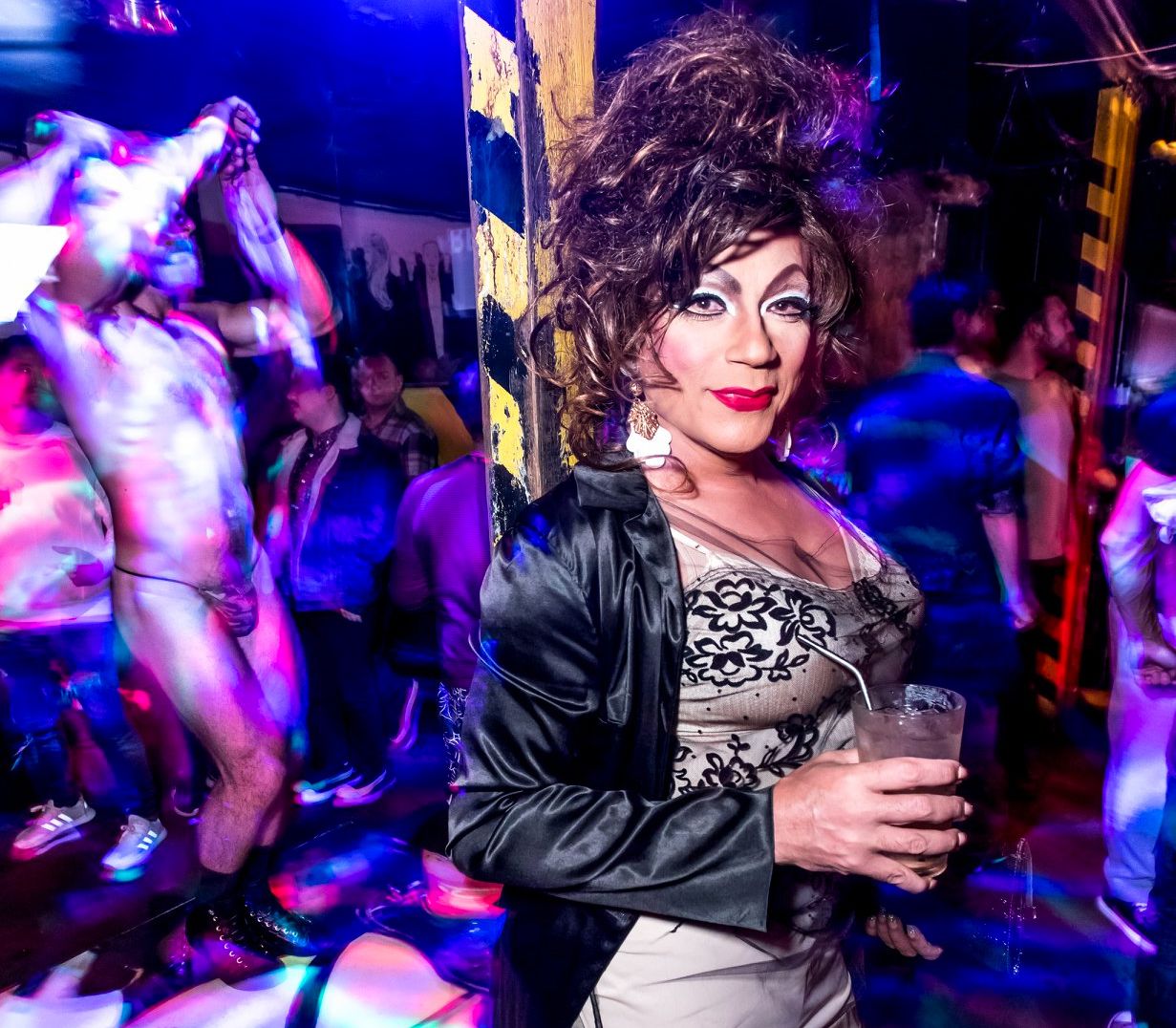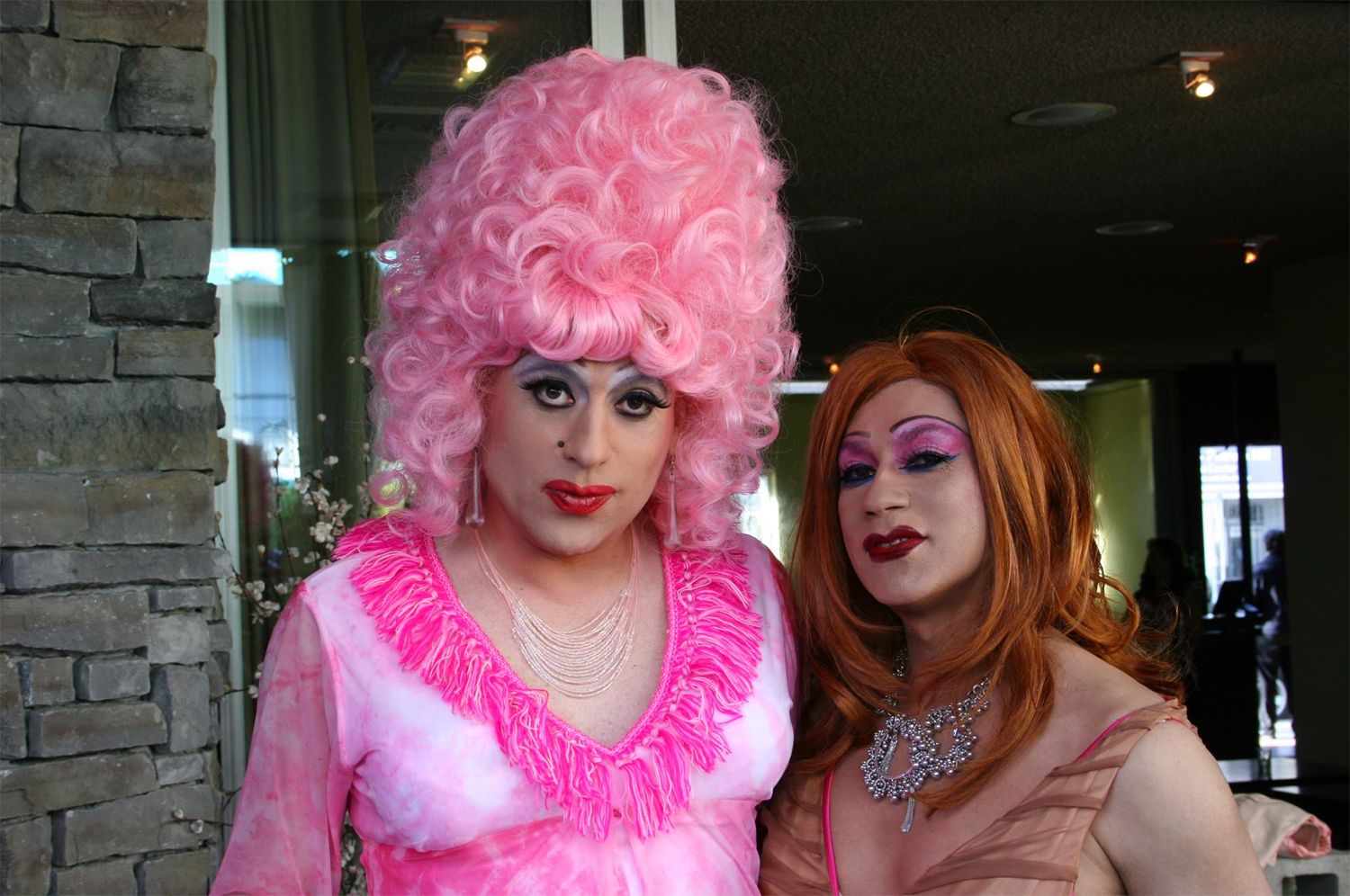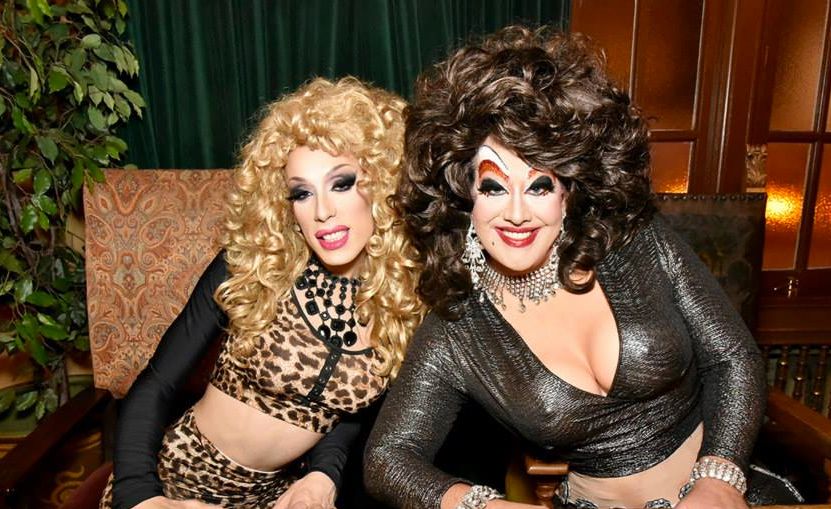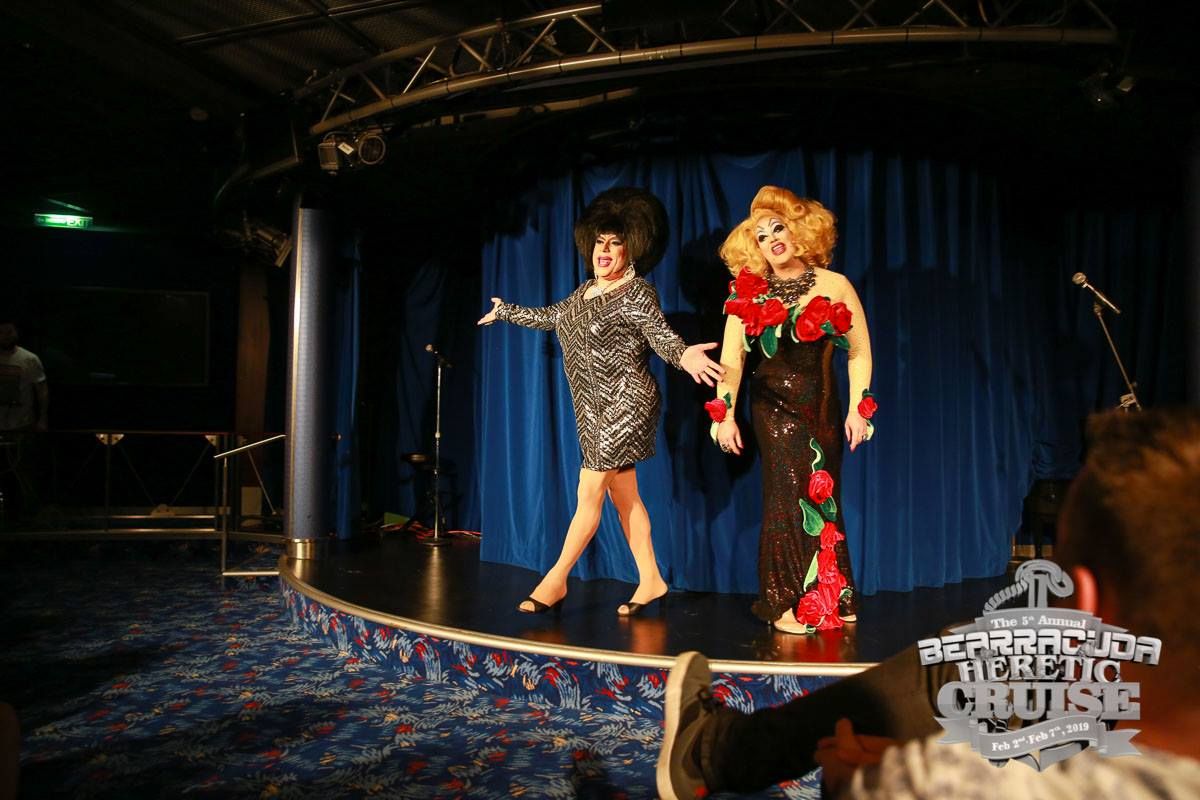A list purporting to rank the "most powerful drag queens in America" made the rounds last week despite a fatal, essentially discrediting flaw: It was populated only by queens who have appeared on Rupaul's Drag Race. Given the lack of San Francisco representation on the list, and the continued popularity of drag in this city — where the stages tend to be dominated by local talent — friends and fans, including SFist, naturally turned to some well known local drag queens to ask them for their reactions. And for the most part, they just laughed.
Referring to Season 1 oddball contestant Tammie Brown (who also made a brief re-appearance on the first season of Rupaul's Drag Race All-Stars), local star Heklina just said, "Nobody can tell me that Tammie Brown is more powerful than me."
The list in question came from New York Magazine, and it was that popular publication's attempt to devote one of its weekly covers during Pride Month to this relatively new national obsession with an LGBTQ subculture. As many have pointed out since its publication last Monday, the photos were entirely shot at DragCon, the five-year-old drag fan convention started by Rupaul which happens each May in Los Angeles, and now has a New York offshoot in September. And for reasons that can only be explained by journalistic laziness and the desire for an eye-catching headline, queens who may have popular followings and entire mini-empires in their hometowns — like SF's own Heklina, Peaches Christ, and Juanita More!, and the army of others in New York, Chicago, and elsewhere who have never been on Drag Race — were deemed irrelevant for inclusion.
"No one told us they were gonna be ranking us, but hey press is press," says Season 4 contestant Willam Belli on Twitter. And in an appearance on The View last week, Season 11's Miss Congeniality Nina West said the ranking was "so problematic for our community," and she cited countless queens including Lady Bunny and Peaches Christ who are still around, and powerful, and who paved the way for everyone on the list.
The Advocate immediately published this dismissal of the list, pointing out multiple factual errors. And many of the contributing writers listed on the piece, like Mano Agapion, acknowledged on Twitter that "everyone hates it."
After reaching out to SF queens Peaches, Heklina, and Juanita, it's clear that they've learned to let articles like this roll off their backs, but it doesn't make it any less annoying. Sure, they could have tried for their own TV fame by going on the show — producers have reached out over the years — but a few bad edits could have the power to damage the personal brands they've spent decades building in the Bay Area and beyond. And to have prominent magazine editors outright ignoring a history of drag beyond ten years ago is an obvious insult.
"I love that this show has brought a part of drag into everyone's home," Juanita More says, diplomatically. "It's making it more accessible. [But] there are just so many more stories to tell. I look forward to the day when the doors are wide open and everyone is able to tell their own story."

Rupaul's Drag Race has done wonders for the mainstreaming of drag, taking an irony-laced art form that used to be performed mostly for gay male audiences in nightclubs and bars, and attracting fans that include big-name celebrities and tween girls from coast to coast. Rupaul can take pride in creating a cottage industry and a new income stream for the 100+ queens who were on the show. But she also bears some responsibility for simultaneously dumbing down drag for the masses — and for presenting drag as a constant competition with clear winners and losers, which is something that the New York Mag piece reinforces.
The Local Reaction: Laughter and Resignation
Given San Francisco's significant role in creating American drag culture — beginning with the glamorous female impersonators who used to perform at Finocchio's in North Beach in the 1950s, and continuing through the genderfuck playfulness of The Cockettes and the political/theatrical zaniness of Trannyshack in the 1990s and 2000s — it's unfortunate that it's been left out of the conversation that's arisen around Rupaul and her empire.
Heklina says she wasn't shocked to see the piece, because one of the writers called her to ask her some questions for it. She's known as someone who books many of the Drag Race girls at her club Oasis after they've been on the show, and one marker of power on the list is how much queens can charge for appearances. "I thought it was going to be explicit that these were just Rupaul queens they were ranking," she said. A case in point about Heklina's power: As a queen who books Ru girls at a nightclub, she has a role in actually moving the market for their booking rates. She says that several years ago the rates that some of them were trying to charge skyrocketed, and she and several other promoters decided together to stop booking them because they would just lose money on those events. "These were queens who were on the current season, and they didn't even have a fan base yet." She says after that, the rates started coming back down again. But in some cases, she sees queens who used to perform at Trannyshack in the last decade for $100 — like Sharon Needles, Raja, Detoxx and Alaska — who can now command exponentially more. Given their history, she says, those queens tend to charge a preferred "hometown" rate when they return to known promoters.
Heklina adds that she and Peaches — who both booked some of the most recent season's queens for shows in SF before the season was over — were both told ahead of time who the top queens ended up being so that they could plan accordingly.

Peaches didn't even notice the list's publication at first, and only slowly realized the hubbub it was causing online early last week.
"Because there have been so many different internet rankings and articles about the 'richest drag queens' and 'the most successful drag queens'... I guess I didn't get the magnitude of this being New York Magazine," says Peaches Christ. "And once I looked at it and saw that no non-Ru girls were included, I have to say that I just thought it was funny."
Peaches continues, "All we can do at this point is laugh. I was texting Heklina and Varla Jean Merman about it, and like, what's the alternative? That we just sit around being bitter and resentful about the fact that we're not getting the credit that — maybe — we deserve?"

Why There's Never Any Love For San Francisco
The topic that's discussed among local drag fans and the drag community just about every year when a new season of Rupaul's Drag Race rolls around is why the show has, in 11 seasons, only ever featured a single San Francisco queen: Honey Mahogany, who appeared briefly in Season 5. We know from pieces like this one by the Chronicle's Tony Bravo that, in some cases, it's not for lack of trying — one of the headmistresses of drag at The Stud for the last decade, VivvyAnne ForeverMore, sent in audition tapes last season, to no avail. "The deadlines are unbelievably quick," she said, and the whole process "ridic." (Incidentally, Vivvy's hosting a pizza/viewing party next week at The Stud to show everyone her failed audition.)
As local writer and longtime drag fan K.M. Soehnlein explains, "San Francisco drag has never been about 'realness' the way New York or LA drag has been. From the Cockettes to T-shack to what’s happening weekly at The Stud, it’s always been about punk, pranks, and some irreconcilable mash-up of fine art and the gutter." There's also the fact that, by and large, one's ability to be glamorous and pretty is always a deciding factor on who stays and who goes home on Drag Race — even Season 11 winner Yvie Oddly talked about needing to prove she knew how to do this late in the season. Soehnlein adds, "We’re much less binary about gender [in SF] than what RuPaul generally reinforces on the show. Will there ever be a cisgendered 'faux' queen on Drag Race? I doubt it."
Soehnlein does credit the show with giving a platform to the essential conversation the queens often have about their pasts, and their families. "I’m always moved by queens talking in the workroom about the discrimination they’ve felt, especially inside their families," he says. "The family unit is still the primary source of homophobia for most queer children, and Drag Race makes space to call that out."
As for chasing fame on the show, by and large, SF's more established queens have decided to heed the cautionary tales of established performers who have gone on it and been knocked out early, like Acid Betty (8th place on Season 8) and Charlie Hides (12th place on Season 9) — and to wager that they'd rather keep control of their image and of the characters they've spent years establishing. As New York drag vet Hedda Lettuce once said in reaction to the Season 2 cast of the show, "You know why they picked those girls? Because they're easy to humiliate. The show is about humiliation, not about honoring the drag community."
Heklina says that both she and Peaches were approached and courted by the show's producers about possibly joining the cast several years ago, but Heklina says they both decided to turn it down. "I spoke to Alaska and a couple of other people, and they were like 'Yeah, you shouldn't do it,'" Heklina says. "I'm too old. Also, I am established. I have my persona already built, and they can manipulate you [and how you're seen] any way they want. I think it could be really bad."

How Drag Has Gone Bland
"When I started doing drag, the fans themselves were artists and weirdos," Peaches says. "The drag cliques of San Francisco all got along. The weirdos from Trannyshack were all friends with the Imperial Court and with the Sisters of Perpetual Indulgence. You could be a total fucking booger and make a career. I'm a testament to that. I used to do clown makeup. But people came to see the stories or the shock value or whatever else. Now there's this overwhelming fan culture that's kind of pushed cooler fans away from drag... And everything now is a competition. It's just not as interesting to me."
She adds, "When anything goes mainstream, it gets dumbed down."
Peaches says that her aesthetic and areas of specialty — namely movie parodies and horror drag — don't really fit in with the Drag Race machine anyway. She's more excited by the Boulet Brothers, based in LA, who have a sort of spoof version of Drag Race on Amazon Prime called Dragula, which is a tongue-in-cheek "search for the next drag super monster."
But neither Heklina nor Peaches can deny that Drag Race has been good for business, even if it's done so sometimes at the expense of less boundary-pushing drag.
"As a club promoter and a business person, it would be foolish of me to ignore the industry and fandom that's built up around these queens," Heklina says. At Oasis in recent months she's featured Saturday shows headlined by Plastique Tiara, Brooke Lynn Hytes, Soju, and both Season 11 finalist Silky Ganache and winner Yvie Oddly are booked in the next several weeks.
Peaches says, referring to DragCon, "If you had told me ten years ago, 'Oh someday there's going to be a giant drag convention,' I just wouldn't have believed it. The power of the popularity of that show has been just unreal."
She says that World of Wonder (the production company behind Drag Race and DragCon) has always been very generous with her at DragCon, and that the company doesn't have any negative view of San Francisco. And Peaches concedes that, after hearing the kind of money that some of the Drag Race queens like Bianca Del Rio have been making, "It's hard not to think, 'Well, maybe I shoulda gone on that fuckin' show.'"

Both Heklina and Peaches agree that there is something lost in the broader fan culture when the fans don't explore beyond the people who have appeared on the show, and unfortunately things like the New York Magazine ranking reward and validate that kind of laziness.
"The average drag fan now only cares about Rupaul queens, to the point of being rude to other queens," Heklina says. "They don't seem to know that drag even existed before Drag Race." She points to a trip she took last year to Iceland — where she is in fact from — and because she was performing there with Detoxx, it was Detoxx who was on all the artwork and promotional material, and who commanded most of the fans' attention. "It was a strange experience," she says.
Heklina has seen first-hand that there's very little artistry happening on stage when some of the Drag Race queens perform live. "All people want to see now is a death drop. And it always gets the same response," she says. She's noticed that during most of the numbers these queens perform, they spend 80 percent of their time on stage just collecting dollar bills, rather than performing. The emphasis now seems to be on Instagrammable and Snap-able moments, more than on appreciating the theater, too. "I feel like fans seem to care more about the meet-and-greet and the photo opportunity than they do about the show itself," Heklina says.

But of course, having more fans of drag, and hopefully more styles — and oddballs like Yvie — getting to shine on television, are bound to be good things for the industry, even though it may feel less edgy and underground. And meanwhile, the popularity of the show may be driving fans who crave something weirder to seek out and support the next generation of alterna-drag.
There is still plenty of it to find here in SF, if you're looking. Says Soehnlein, "Last month at 'Work More 8' at Counterpulse I saw a huge variety of art drag, including one total deconstruction where boys and girls in full face and basic athletic gear pulled pantyhose on over their sneakers, tube socks and shorts, and then jammed stuffed animals into the pantyhose for padding. They sucked on helium and sang into the mic. They danced around with orange safety fencing. It was like drag in the Upside Down. I fucking loved it."
"I think you're already seeing that a lot of the fans of more alternative or 'queer' drag are getting drawn away to things like The Boulet Brothers," Peaches says. "They're finding smaller, more local drag shows where the envelope is being pushed further than you're going to see on a TV show like Drag Race." Other examples here in town include VivvyAnne ForeverMore's shows at The Stud, and Chasers, a Tuesday party at Aunt Charlie's.
"I'm kind of just holding my breath and waiting for the show to go away," Heklina says. "I get the feeling that the writing is on the wall... but who knows..." She laughs. "It could go on forever."

